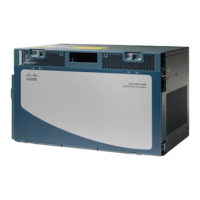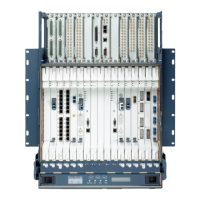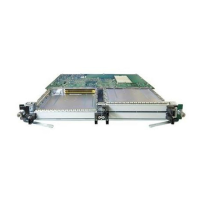10-23
Cisco ONS 15454 SONET/SDH ML-Series Multilayer Ethernet Card Software Feature and Configuration Guide, R4.0
78-15224-02
Chapter 10 Configuring Networking Protocols
Configuring IP Routing
To create an EIGRP routing process, you must enable EIGRP and associate networks. EIGRP sends
updates to the interfaces in the specified networks. If you do not specify an interface network, it is not
advertised in any EIGRP update.
EIGRP Router Mode Commands
Beginning in privileged EXEC mode, follow these steps to configure EIGRP. Configuring the routing
process is required; other steps are optional:
IP hello interval For low-speed nonbroadcast multiaccess (NBMA) networks:
60 seconds; all other networks: 5 seconds.
IP hold-time For low-speed NBMA networks: 180 seconds; all other networks:
15 seconds.
IP split-horizon Enabled.
IP summary address No summary aggregate addresses are predefined.
Metric weights tos: 0
k1 and k3: 1
k2, k4, and k5: 0
Network None specified.
Offset-list Disabled.
Router EIGRP Disabled.
Set metric No metric set in the route map.
Traffic-share Distributed proportionately to the ratios of the metrics.
Variance 1 (equal-cost load balancing).
Table 10-4 Default EIGRP Configuration (continued)
Feature Default Setting
Command Purpose
Step 1
Router# configure terminal
Enters global configuration mode.
Step 2
Router(config)# router eigrp
autonomous-system
Enables an EIGRP routing process, and enters router
configuration mode. The autonomous system number
identifies the routes to other EIGRP routers and is used to tag
routing information.
Step 3
Router(config)# network
network-number
Associates networks with an EIGRP routing process. EIGRP
sends updates to the interfaces in the specified networks. If an
interface’s network is not specified, it is not advertised in any
IGRP or EIGRP update.
Step 4
Router(config)# eigrp
log-neighbor-changes
(Optional) Enables logging of EIGRP neighbor changes to
monitor routing system stability.

